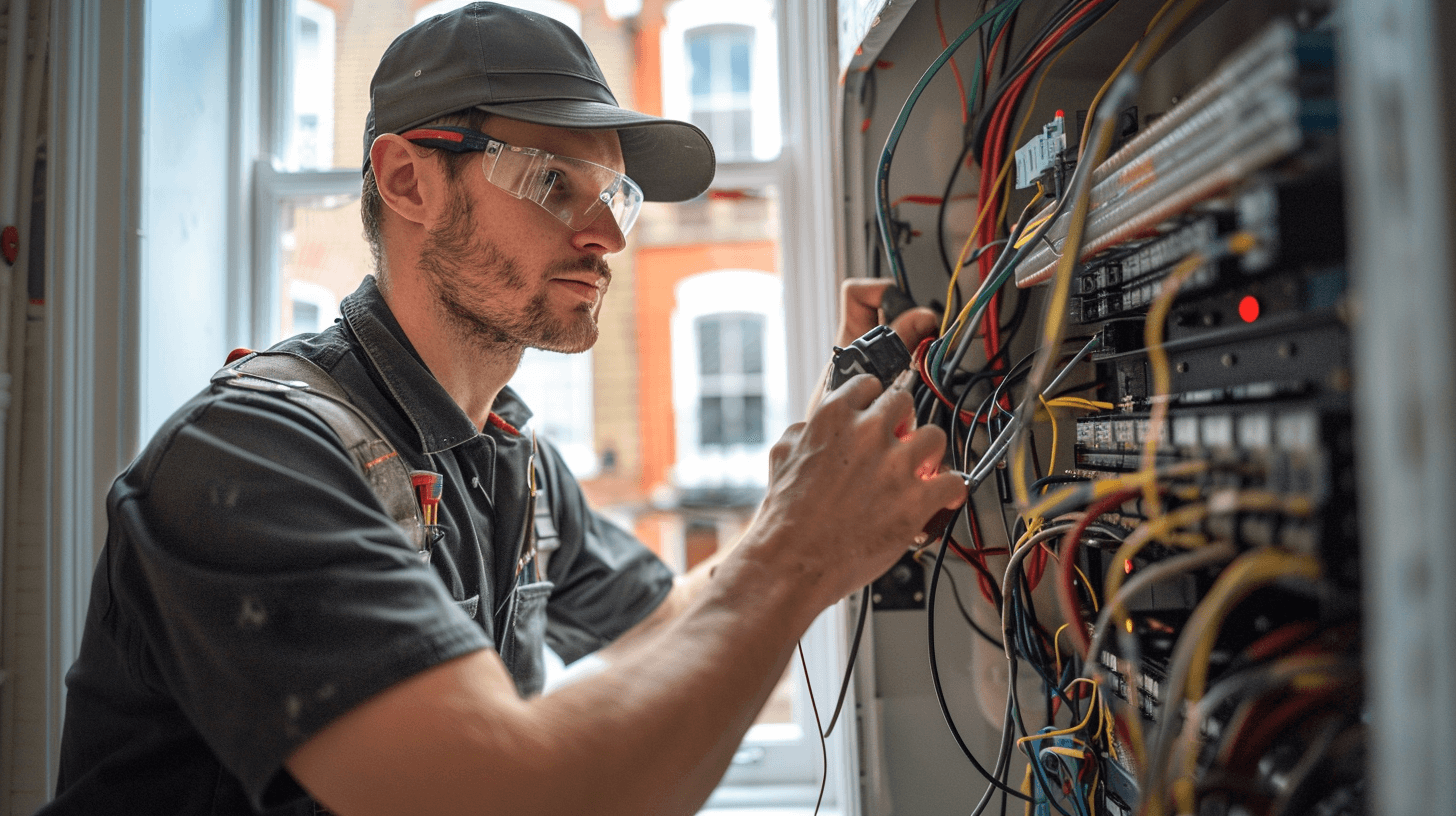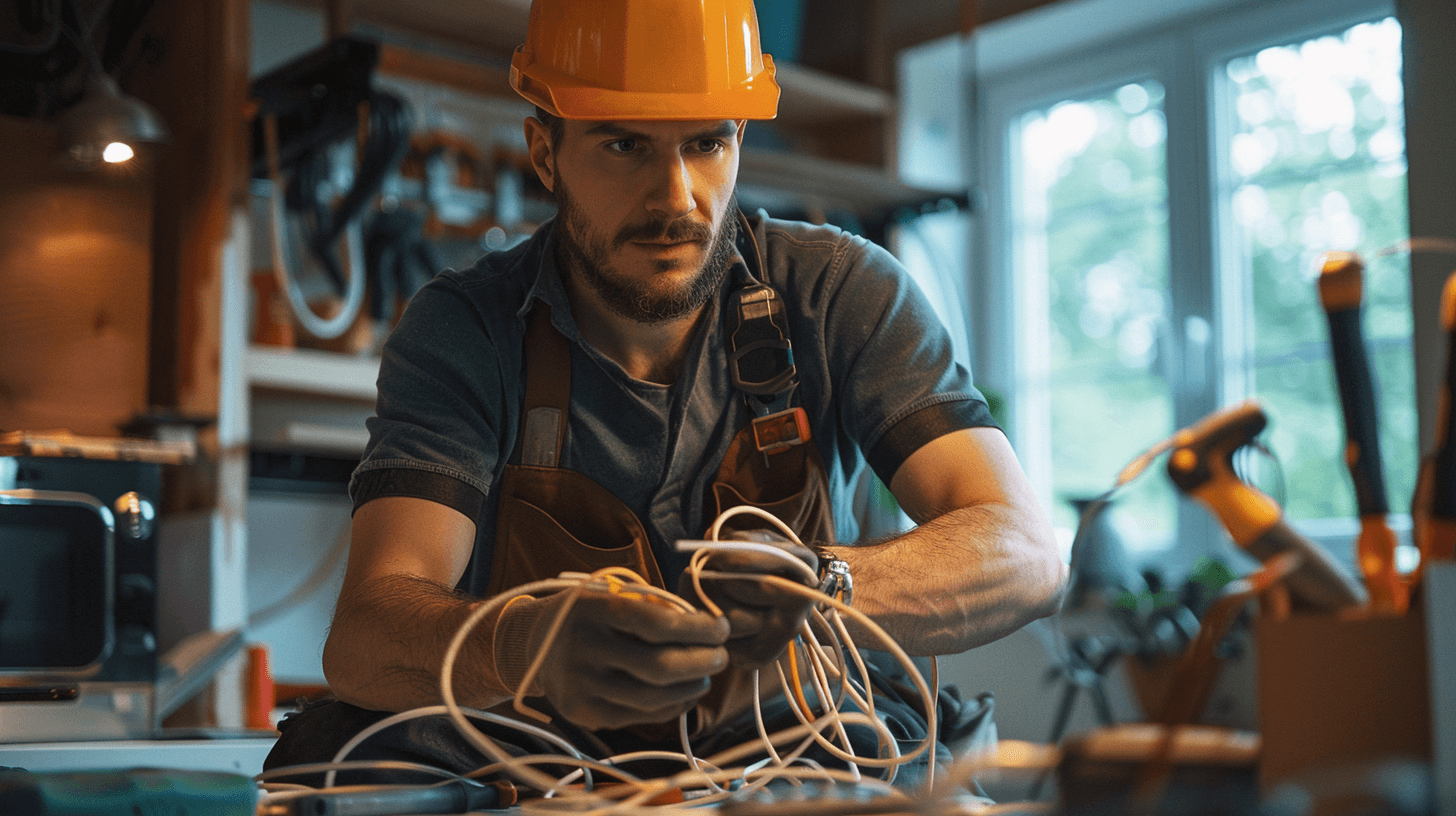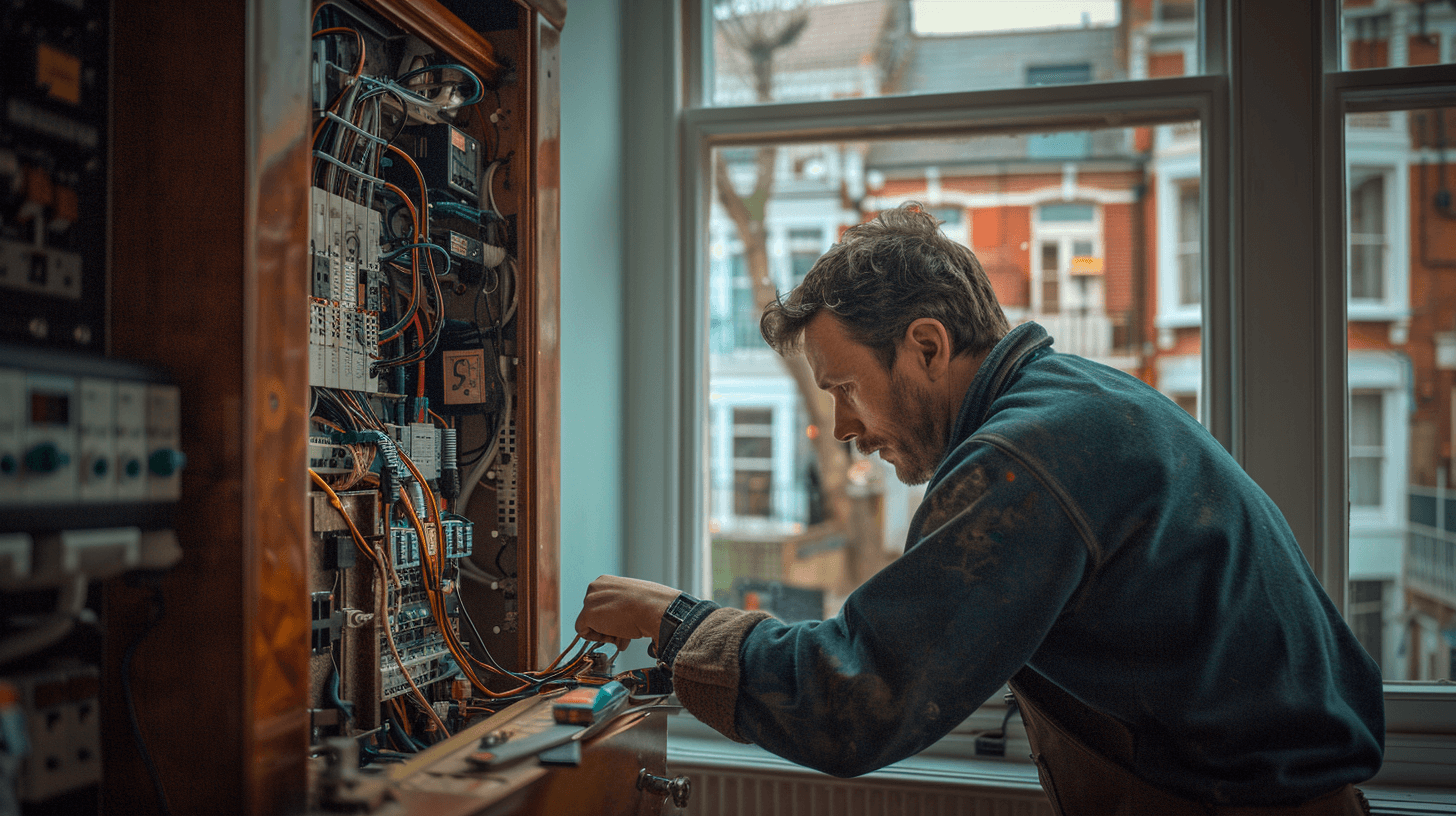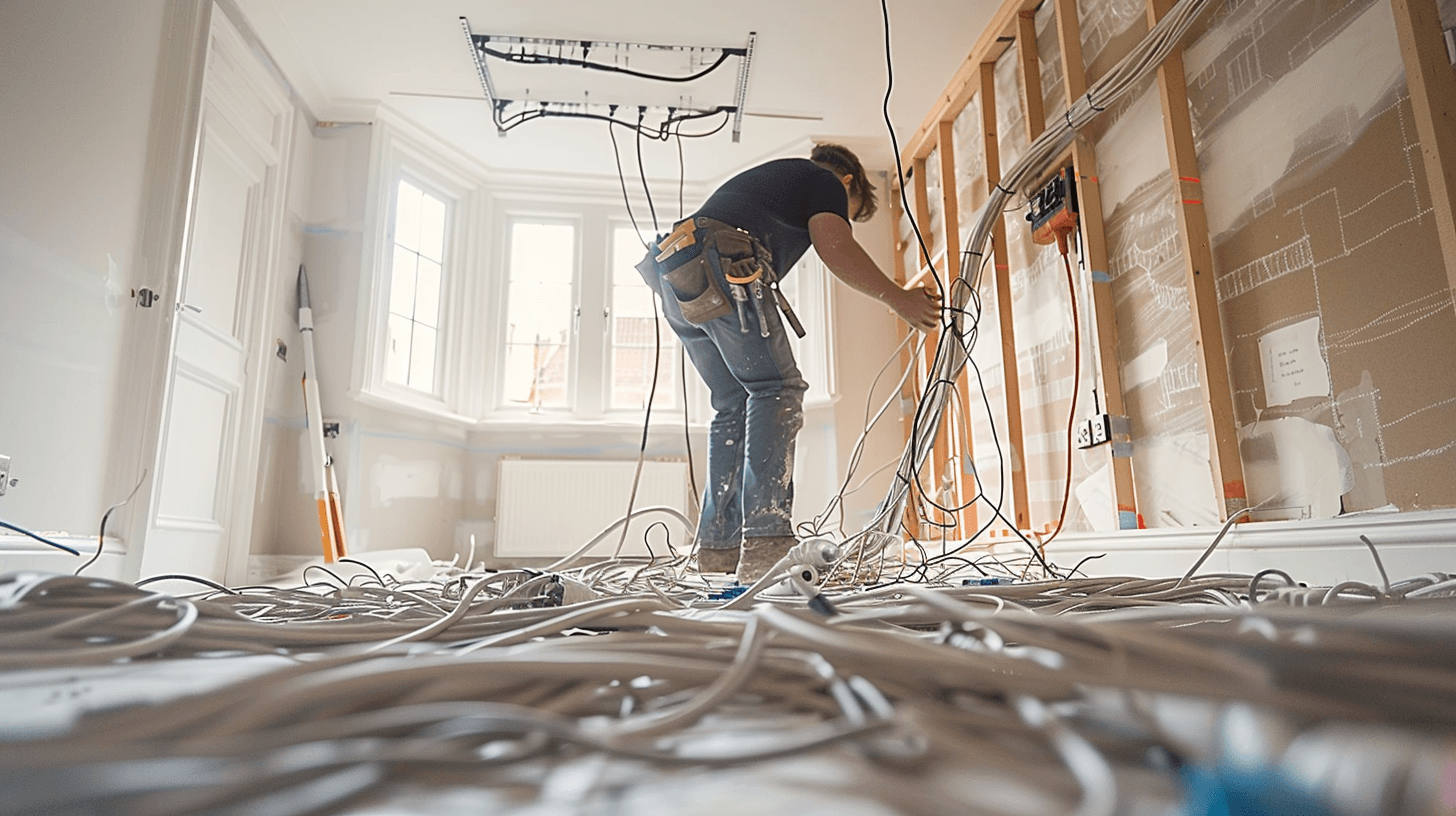 How long does residential rewiring typically take
How long does residential rewiring typically take

Understanding the Rewiring Timeline
When embarking on a residential rewiring project, homeowners often first inquire about the expected duration. Typically, rewiring can span anywhere from 3 to 15 days. However, this timeframe is not set in stone and can vary significantly based on several factors.
Factors Impacting Rewiring Duration
The complexity of a property’s electrical system is a primary determinant of the rewiring timeline. A more intricate system, with numerous circuits and fixtures, will naturally require a longer period to safely and effectively rewire. Additionally, the age of a home plays a crucial role; properties over 40 years old may have outdated wiring that necessitates more extensive work, thus extending the process.
Aligning Safety with Modern Needs
Safety and Compatibility: Aligning the rewiring schedule with safety standards and the requirements of modern appliances is paramount. Up-to-date wiring ensures that your home can safely handle the electrical load of contemporary devices, preventing potential hazards.
The Importance of Professional Assessment
A professional electrician’s initial assessment is critical in determining the precise scope of work and, consequently, the project’s duration. This evaluation will consider the current state of the electrical system, the home’s layout, and any specific homeowner requirements, such as future-proofing for smart home technologies or additional outlets.
By understanding these variables, you can better anticipate the timeline for your rewiring project and ensure that the work aligns with both safety protocols and your modern electrical needs.
Initial Assessment: The Foundation of Rewiring
Before the commencement of any rewiring project, a professional electrician conducts a thorough assessment of your property. This evaluation is pivotal in identifying the current state of the electrical system and determining the scope of work required.
The Electrician’s Examination
A licenced electrician will inspect various elements, including the age of the existing wiring, the capacity of the current system, and the safety of the electrical panels. They will also assess the need for modernization to accommodate contemporary appliances and devices.
Planning: Blueprint for Success
Following the assessment, the electrician will devise a detailed plan. This blueprint includes the placement of outlets, switches, and fixtures, ensuring they meet your needs and comply with current regulations. The planning phase is instrumental in avoiding future disruptions and additional costs.
Importance of Accurate Timeline Estimation
An initial assessment is crucial for providing an accurate estimate of the project’s duration. It allows the electrician to foresee potential challenges and incorporate them into the timeline, ensuring a realistic schedule is set.
Preparing for Efficiency
You can facilitate a swift and efficient assessment by clearing access to electrical panels and outlets and providing detailed information about your power usage and any issues you’ve encountered. This preparation enables the electrician to focus on the technical aspects of the assessment, laying the groundwork for a successful rewiring project.
Key Variables Affecting Rewiring Timeframes

The duration of a residential rewiring project is not a one-size-fits-all scenario. Several factors come into play, each capable of extending or reducing the time needed to complete the work.
Property Age and Rewiring Schedule
Older homes, particularly those exceeding 40 years, often require a more extensive rewiring process. The outdated electrical systems in these properties may not meet current safety standards, necessitating a comprehensive overhaul which can prolong the project timeline.
Modern Appliance Compatibility
As households accumulate modern appliances with higher electrical demands, rewiring must accommodate these changes. Upgrading the electrical system to handle increased loads can add complexity and time to the rewiring process.
Safety and Compliance: Non-Negotiable Timelines
Safety is paramount in any electrical work, and compliance with local codes and regulations can influence the rewiring schedule. Electricians must adhere to standards such as the 18th edition of BS7671 and Part P of the Building Regulations, which may require additional time for inspections and modifications to ensure the rewiring is up to code.
The Rewiring Process: A Step-by-Step Overview

Rewiring a residential property is a meticulous process that involves several key steps, each critical to the project’s success and your home’s safety.
Component Replacement and Integration
The replacement of electrical components such as lights, sockets, and control panels is carefully scheduled to minimise disruption. Each component is integrated into the new system to ensure compatibility with modern appliances and to meet current electrical standards.
Structural Modifications for Cable Routing
Floorboard lifting and wall chasing are essential for concealing new wiring and maintaining the aesthetic integrity of your property. This stage is labour-intensive and must be executed with precision to avoid structural damage.
The Imperative of Safety Reports
Upon completion of the rewiring, safety reports are generated to certify that the work meets all regulatory standards. These documents are crucial for your peace of mind and may be required for insurance purposes or future property transactions.
Through this structured approach, electricians ensure that the rewiring process is not only efficient but also aligns with the highest safety standards, guaranteeing the longevity and reliability of your home’s electrical infrastructure.
Residing at Home During the Rewiring Process

When your home undergoes rewiring, understanding the impact on your daily living conditions is essential. While it is feasible to remain in the residence during the project, certain factors must be considered.
Expectations of Dust and Debris
During rewiring, the lifting of floorboards and chasing of walls is inevitable, leading to the generation of dust and debris. Homeowners should anticipate this and prepare accordingly.
Minimising Disruption
To reduce the impact of the rewiring process on your household:
- Schedule work in stages: This allows you to use parts of your home while other areas are being worked on.
- Protect belongings: Cover furniture and seal off areas to limit the spread of dust.
- Communicate with electricians: Ensure they understand your living requirements to work around your schedule.
Deciding to Vacate
Some homeowners may opt to temporarily relocate, especially during extensive rewiring projects. This decision is often influenced by:
- The scale of the project and the associated level of disruption
- The presence of vulnerable individuals who may be affected by the dust and noise
- The need for a rapid completion of work, which can be more easily achieved in an unoccupied property
By considering these aspects, you can make an informed decision on whether to stay or temporarily move out during the rewiring of your home.
Compliance with Legal and Safety Standards in Rewiring

Mandatory Legal Requirements for Residential Rewiring
Residential rewiring must comply with stringent legal requirements to ensure safety and functionality. These include adherence to the latest edition of the British Standards BS7671, also known as the IET Wiring Regulations, which outline the standards for electrical installation.
Influence of BS7671 on Rewiring Timelines
The 18th edition of BS7671 introduces updated safety standards that can impact the rewiring timeline. Electricians must account for these regulations, which may necessitate additional measures or modifications to the electrical system, potentially extending the project duration.
The Critical Role of Part P Inspections
After rewiring, a Part P inspection is imperative. This statutory requirement ensures that electrical work in dwellings in England and Wales is carried out safely and in accordance with the Building Regulations. The inspection must be performed by a qualified electrician or a building inspector.
Adherence to Regulations and the Rewiring Schedule
Compliance with local codes and safety standards is not optional; it is a legal obligation. Failure to adhere can lead to unsafe living conditions and legal repercussions. Consequently, the rewiring schedule must accommodate the time required for thorough inspections and adjustments to meet these critical regulations.
Financial Planning for Residential Rewiring

Understanding the financial aspect of residential rewiring is crucial for homeowners. The cost is influenced by various factors, including the size of the property and the complexity of the project.
Typical Cost Range for Rewiring
The cost for rewiring a residential property typically ranges from $1,500 to $10,000. This broad range accounts for differences in property sizes, the age of the electrical system, and regional labour rates.
Per Square Foot Cost Calculation
Rewiring costs are often calculated on a per square foot basis, with prices ranging between $2 to $4 per square foot. This metric helps provide a more tailored estimate based on the property’s dimensions.
Impact of Property Size and Complexity
The overall cost is directly affected by the size of your property and the complexity of the rewiring needed. Larger homes or those with more intricate electrical systems, such as those requiring smart home integration, will typically incur higher costs.
Energy Efficiency Considerations
Investing in energy-efficient rewiring can lead to long-term savings. While the initial outlay may be higher, incorporating energy-efficient materials and appliances can reduce future energy bills, making it a financially sound decision in the long run.
Selecting a Qualified Electrician for Rewiring

Choosing the right professional for residential rewiring is a decision that impacts not only the efficiency of the project but also the safety of your home.
The Necessity of NICEIC Certification
Hiring a NICEIC-certified electrician is crucial for several reasons:
- Assurance of Quality: NICEIC certification means the electrician has met rigorous standards of training and competence.
- Compliance with Regulations: Certified electricians are up-to-date with the latest building regulations, including BS7671 and Part P.
- Safety: NICEIC electricians follow best practices that prioritise the safety of your electrical installations.
Expertise and Efficiency
Professional expertise is key to the rewiring process for the following reasons:
- Diagnosis and Planning: Experienced electricians can quickly diagnose issues and plan the rewiring to minimise disruptions.
- Problem-Solving: They can efficiently handle unexpected challenges that may arise during the project.
- Quality Workmanship: Expert electricians ensure that the rewiring is done right the first time, avoiding future issues.
Criteria for Choosing an Electrician
When selecting an electrician, consider the following:
- Certifications: Look for NICEIC or equivalent credentials.
- References: Check for positive reviews and testimonials from previous clients.
- Experience: Ensure they have experience with properties similar to yours.
“All Service 4U” and Compliance
“All Service 4U” ensures compliance and safety during rewiring by:
- Adhering to Standards: Following all local codes and safety standards.
- Qualified Personnel: Employing electricians with the necessary qualifications and ongoing training.
- Thorough Inspections: Conducting comprehensive inspections post-rewiring to guarantee safety and compliance.
Preparing Your Property for the Rewiring Process

Homeowner’s Role in Rewiring Preparation
To ensure a smooth rewiring process, homeowners can take proactive steps to prepare their property. This preparation minimises potential obstacles, allowing electricians to focus on the technical aspects of the rewiring.
Protective Measures for Furnishings and Interiors
During rewiring, the protection of your home’s interiors is paramount:
- Furniture: Move or cover furniture to shield it from dust and debris.
- Flooring: Lay down protective coverings to prevent damage during floorboard lifting.
- Valuables: Secure or remove valuables from work areas to avoid accidental damage.
Collaborative Planning with Your Electrician
Engaging in a dialogue with your electrician about the placement of lights, switches, and sockets is crucial. This collaboration ensures that the final layout aligns with your lifestyle and the property’s design aesthetics.
Future-Proofing and Smart Technology Considerations
Discussing future-proofing and smart technology integration with your electrician can significantly impact the rewiring process:
- Smart Home Devices: Plan for the integration of smart home systems, requiring additional wiring and connectivity solutions.
- Energy Efficiency: Consider energy-efficient installations that can reduce long-term costs and environmental impact.
- Upgrades: Allow for potential upgrades, ensuring your electrical system can accommodate future technological advancements.
Accommodating Modern Devices in Rewiring

Rewiring is not just about replacing old wires; it’s about preparing your home for the future. As technology advances, the electrical needs of modern devices and appliances evolve. A rewired home can handle increased electrical loads and is equipped with the necessary outlets and circuits to support the latest technologies.
Smart Home Integration Considerations
Smart home technology requires a robust electrical framework for seamless integration. During rewiring, electricians can instal dedicated circuits and Ethernet cabling to support smart devices, ensuring reliable connectivity and functionality.
Emphasis on Eco-Friendly Materials
Using environmentally friendly materials during rewiring is beneficial for both your health and the planet. Low-emission wiring and energy-efficient fixtures contribute to a greener home and can lead to cost savings on energy bills.
“All Service 4U” and Future-Proofing Your Electrical System
“All Service 4U” specialises in future-proofing electrical systems. Their services include:
- Consultation: Advising on the latest electrical innovations suitable for your home.
- Installation: Implementing advanced wiring solutions that cater to future technological upgrades.
- Certification: Ensuring all work meets current safety standards and is ready for the demands of tomorrow’s technology.
Post-Rewiring Electrical System Inspections

Regular inspections of your electrical system are essential to ensure ongoing safety and functionality. Post-rewiring, these inspections can identify any potential issues that may arise over time due to environmental factors or wear and tear.
Frequency of Electrical Inspections
After a comprehensive rewiring, it is recommended that your electrical system undergoes a detailed inspection every 10 years. For landlords, the Electrical Installation Condition Report (EICR) should be obtained every 5 years, or with each change of tenancy, to comply with safety regulations and to ensure the well-being of tenants.
Significance of the Electrical Installation Condition Report (EICR)
The EICR is a formal document produced after an assessment of the electrical installation within a property. It is a crucial report that identifies any deficiencies against the national safety standard for electrical installations. Obtaining an EICR ensures that your electrical system is not only safe but also up to date with current standards.
“All Service 4U” and Ongoing Maintenance
“All Service 4U” provides comprehensive maintenance and support for your electrical systems. Their services include:
- Scheduled Inspections: Regularly planned checks to maintain the integrity of your electrical system.
- Certified Expertise: Inspections are conducted by qualified electricians who are well-versed in the latest safety standards.
- Support: Ongoing assistance to address any electrical issues promptly and efficiently.
By engaging in regular maintenance and following up with professional inspections, you can ensure the longevity and reliability of your property’s electrical infrastructure.
The Value of Professional Rewiring

Investing in professional rewiring services is not merely an expense; it’s an investment in the safety and functionality of your property. “All Service 4U” ensures that rewiring is conducted in accordance with the latest safety standards, providing you with a reliable and efficient electrical system.
Long-Term Benefits of Updated Electrical Systems
An updated electrical system offers more than just safety; it enhances your property’s value and ensures compatibility with modern appliances. This foresight in electrical planning can prevent costly repairs and replacements in the future.
Initiating Your Rewiring Project

Once you’ve decided to proceed with residential rewiring, the next steps involve:
- Consultation: Contacting “All Service 4U” for a comprehensive assessment of your property’s electrical needs.
- Planning: Working with their team to plan the rewiring process, including timelines, costs, and any specific requirements you may have.
“All Service 4U” at Your Service
“All Service 4U” is ready to assist you in modernising your electrical system. Their team of certified electricians is available 24/7 to provide:
- Expert Guidance: Offering advice on the latest electrical solutions and smart home technologies.
- Quality Assurance: Delivering high-quality work that adheres to safety regulations and customer expectations.
- Customer Support: Providing ongoing support and maintenance services post-rewiring.
To begin your rewiring project, reach out to “All Service 4U” and take the first step towards a safer and more efficient home.

